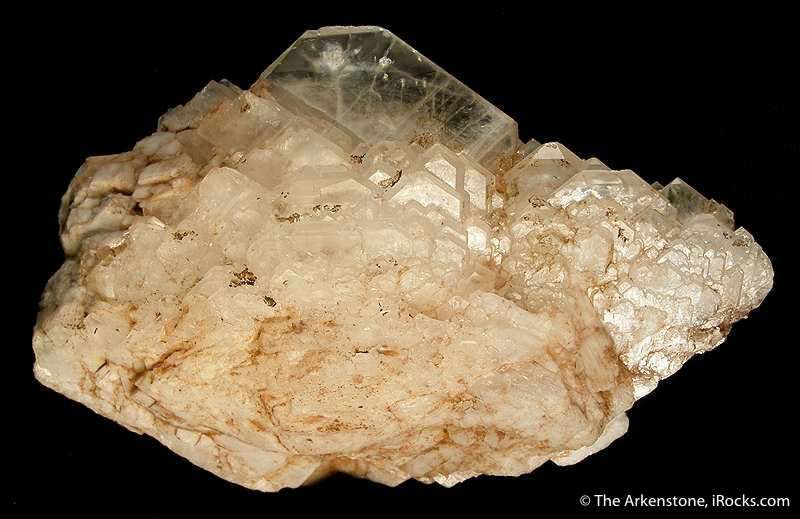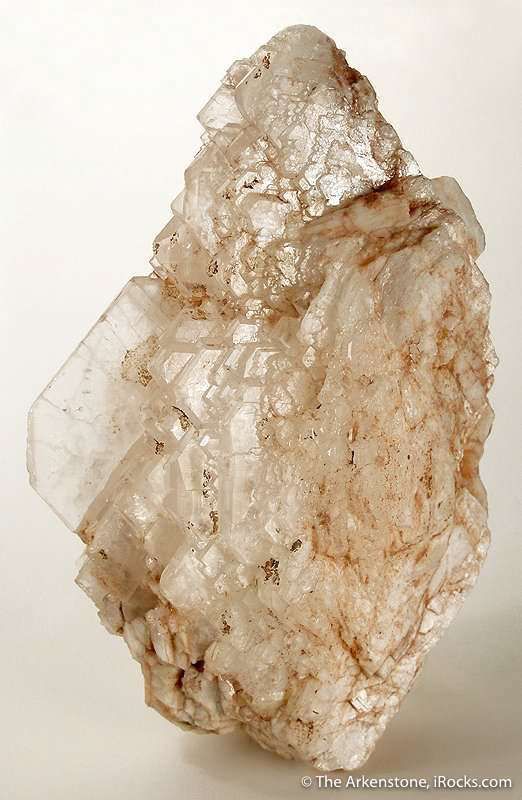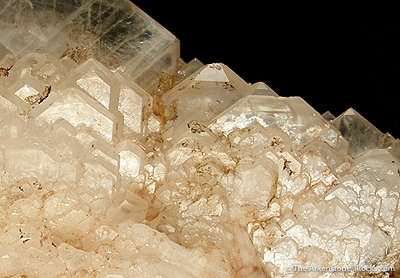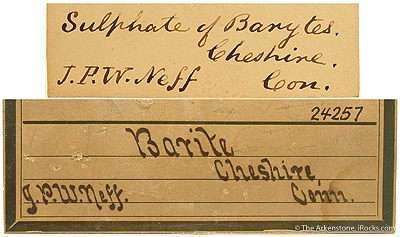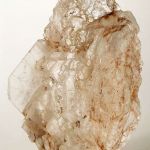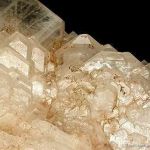- PAS-66
- Barite
- Cheshire, New Haven Co., Connecticut, USA
- Large Cabinet, 16.3 x 10.7 x 5.8 cm
- Ex. Philadelphia Academy of Natural Sciences
- SOLD
This is one of the largest Cheshire barites I have personally seen in anything resembling good form, to survive from the mid to late 1800s era of mining here. Apparently the deposit was quite rich in barite, but I cannot imagine based on the survivors I have seen that such a large piece as this was very common in good form. And, remarkably, it IS largely intact, and has made it through unrepaired. There is some very MINOR edge wear, only. To preserve the antique look, I have not cleaned the piece and in fact it still has original pocket clay material adhering. It really seems micro-crystallized or contacted but terminated, almost all around - except on the bottom where it is cleaved off a large matrix mass. A historic, remarkable specimen of barite from one of the early USA's more important mining locales! Thank you to James Zigras, who found in an old pamphlet published by the Cheshire Historical Society the following information: the exact locale is the JINNY HILL MINE and it operated from 1838-1877. The first barite mine in the US, it was mined for the manufacture of paints in NYC. It was discovered by Benjamin Silliman (of Yale) and noted by him in 1813. He claims the mine was named for "an elderly negress who lived in that area." The vein was followed for a depth of 480 feet and several miles of tunnel were mined. At its height of production in the mid-1800s, it employed 200 people.
